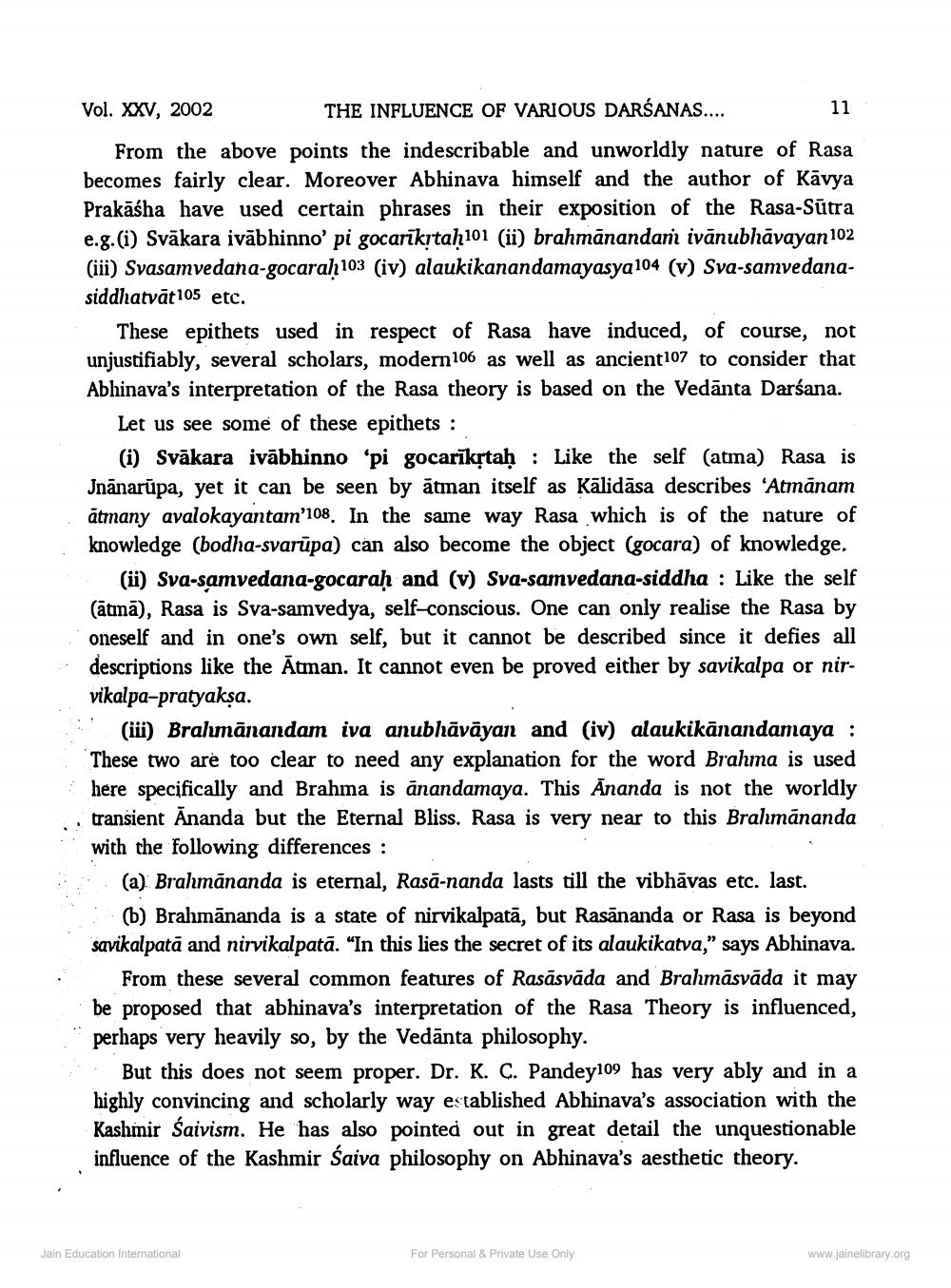________________
Vol. XXV, 2002
THE INFLUENCE OF VARIOUS DARŠANAS....
11
From the above points the indescribable and unworldly nature of Rasa becomes fairly clear. Moreover Abhinava himself and the author of Kavya Prakāśha have used certain phrases in their exposition of the Rasa-Sūtra e.g. (i) Svākara ivābhinno' pi gocarikrtah101 (ii) brahmanandani ivānubhāvayan 102 (iii) Svasamvedana-gocarah 103 (iv) alaukikanandamayasya104 (v) Sva-samvedanasiddhatvāt105 etc.
These epithets used in respect of Rasa have induced, of course, not unjustifiably, several scholars, modern 106 as well as ancient107 to consider that Abhinava's interpretation of the Rasa theory is based on the Vedānta Darśana.
Let us see some of these epithets :
(i) Svākara ivābhinno 'pi gocarīkrtah: Like the self (atma) Rasa is Jnānarūpa, yet it can be seen by ātman itself as Kālidāsa describes 'Atmānam atmany avalokayantam'108. In the same way Rasa which is of the nature of knowledge (bodha-svarūpa) can also become the object (gocara) of knowledge,
(ü) Sva-samvedana-gocarah and (v) Sva-samvedana-siddha : Like the self (ātmā), Rasa is Sva-samvedya, self-conscious. One can only realise the Rasa by oneself and in one's own self, but it cannot be described since it defies all descriptions like the Ātman. It cannot even be proved either by savikalpa or nirvikalpa-pratyakşa.
(iii) Bralımānandam iva anubhāvāyan and (iv) alaukikānandamaya : These two are too clear to need any explanation for the word Brahma is used here specifically and Brahma is anandamaya. This Ananda is not the worldly transient Ananda but the Eternal Bliss. Rasa is very near to this Brahmananda with the following differences :
(a) Brahmānanda is eternal, Rasā-nanda lasts till the vibhāvas etc. last.
(b) Brahmānanda is a state of nirvikalpatā, but Rasānanda or Rasa is beyond savikalpata and nirvikalpatā. "In this lies the secret of its alaukikatva," says Abhinava.
From these several common features of Rasāsvāda and Brahmāsvāda it may be proposed that abhinava's interpretation of the Rasa Theory is influenced, perhaps very heavily so, by the Vedānta philosophy.
But this does not seem proper. Dr. K. C. Pandey109 has very ably and in a highly convincing and scholarly way established Abhinava's association with the Kashmir saivism. He has also pointed out in great detail the unquestionable influence of the Kashmir Saiva philosophy on Abhinava's aesthetic theory.
Jain Education International
For Personal & Private Use Only
www.jainelibrary.org




